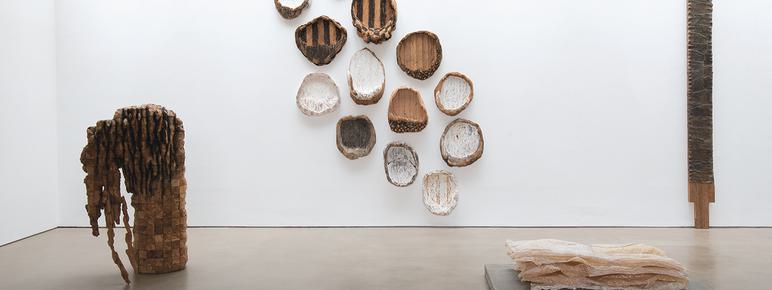
About Ursula von Rydingsvard
The combination of grandeur and discretion and the gesture towards domestic craftsmanship on quite another scale, is key to the powerful, unsettling appeal of von Rydingsvard’s work.
- Emma Crichton-Miller, Apollo
The first large-scale exhibition in Europe by highly acclaimed American artist Ursula von Rydingsvard illustrated the full scope of von Rydingsvard’s diverse practice and included more than 40 works of drawing and sculpture made over the last two decades.
One of America’s most inventive and individual artists, with work in the collections of the Metropolitan Museum of Art and the Museum of Modern Art, among others, von Rydingsvard has evolved a distinctive, highly personal sculptural language that has become synonymous with cedar, the wood that lies at the heart of her practice. The exhibition featured wall-mounted works, monolithic structures and other complex forms, most of which were meticulously assembled from 4” x 4” cedar beams.
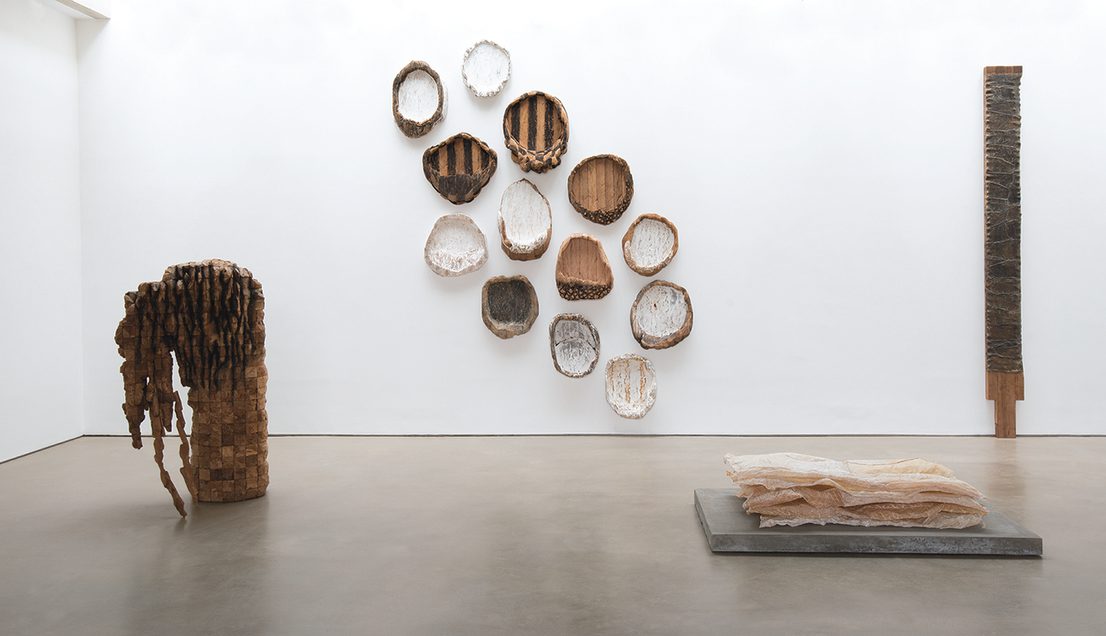
Her works do not grow from sketches or drawings on paper; rather their development is instinctive and responsive throughout the making process, imbuing the works with a feeling of life and a tangibly visceral quality.
The cedar beams serve as von Rydingsvard’s blank canvas, a starting point from which she explores psychological and emotional themes. Having worked directly with cedar for over 35 years using chisels and circular saws, von Rydingsvard is now allergic to the wood and consequently works for up to eight hours a day wearing a heavy, air-pumped protective suit.
From the intimate to the immense, the exhibition examined von Rydingsvard’s sustained investigation of the simultaneous fragility and durability of existence, which often relates to a personal history of displacement. Born to Polish and Ukrainian parents in Germany in 1942, the artist moved through numerous displaced persons camps for Polish people during her youth until her family was able to move to the USA in 1950.
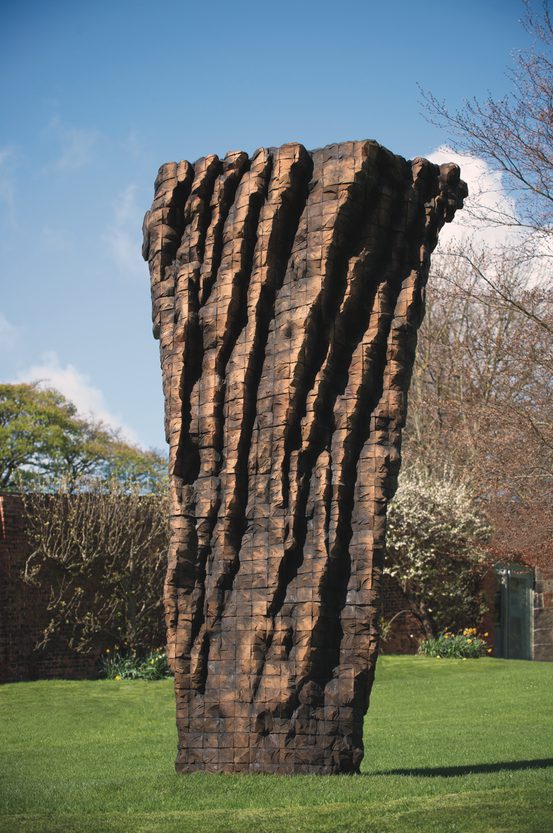

Von Rydingsvard’s ancestral family were peasant farmers and wood featured as an integral part of everyday life. As the artist says “they were surrounded with wood – wooden homes, wooden fences, wooden tools to farm the land.” The exhibition drew out the related resonances of von Rydingsvard’s idiosyncratic sculptural forms, and works such as Echo and Sunken Shadow, both 2011, referenced the simple, rustic items of this heritage, such as bowls, shovels and spoons. The exhibition included a carefully selected display considering the way in which objects amassed by the artist over a lifetime have fed into her practice and thinking.
Von Rydingsvard studied sculpture at Columbia University, graduating with an MFA in 1975. In the same year, she held her first solo show in New York. Her work has since been exhibited in numerous museums and galleries worldwide. Her sculpture is represented in the permanent collections of over 30 museums, including the Metropolitan Museum of Art, Museum of Modern Art, Whitney Museum of Art, Walker Art Center, Nelson-Atkins Museum of Art, Storm King Art Center, and Detroit Institute of Arts. She has received a Guggenheim Fellowship, two awards from the National Endowment for the Arts, three awards from the American section of the International Association of Art Critics, and is a member of the American Academy of Arts and Letters. Permanent sculptures are in the collection of the Microsoft Corporation, Bloomberg Corporation, and Barclays Center among many others.
Twinkling, faceted, exquisite, it (Elegantka II) takes the Yorkshire light into its crystal core – a floating body of blue air
- Laura Cumming, The Observer
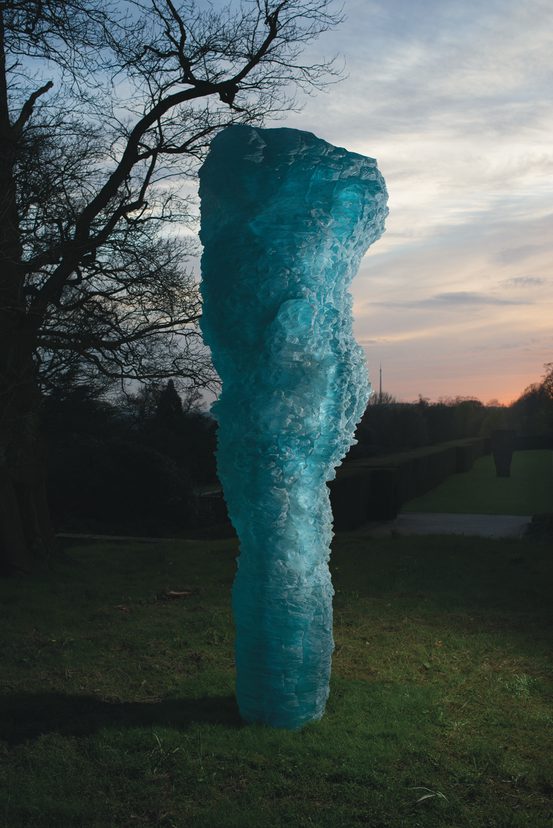
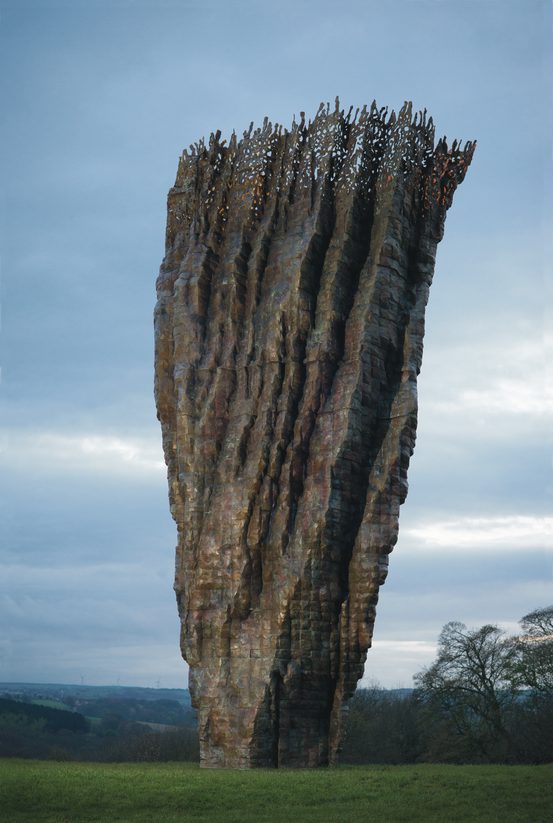
As we stand on the hill above the Underground Gallery beside the cedar original of her Bronze Bowl with Lace, we see Yorkshire’s startling geology of folding hills and valleys with new eyes.
- Emma Crichton-Miller, Apollo
Supported by: Charina Endowment Fund; The Camilli Foundation; Roberta Denning; Agnes Gund; Joyce Linde; Morton and Estelle Sosland; Susan and John Diekman; Ann Hatch and Paul Discoe; The Maxine and Stuart Frankel Foundation for Art; Pat Gantz and Family; George Krupp; Joel and Sherry Mallin; Brian Hopkinson; Ann and Herbert Burger
You might also like
More- Art Outdoors

Ursula von Rydingsvard: Heart in Hand
Heart in Hand relates to an earlier, larger work called Luba that was made in cedar and bronze, and is on permanent display at Storm King Art Center in upstate New York. Both works are intended to suggest a sense of protection and nurturing, like the arm of a mother cradling a baby. - Art Outdoors

Ursula von Rydingsvard: Damski Czepek
Damski Czepek translates as ‘lady’s bonnet’, and has a central hood-like form, with snaking ribbons extending out into the landscape. The shape welcomes you in and envelopes you, and echoes some of the eighteenth-century follies across the estate, such as the Shell Grotto. - News
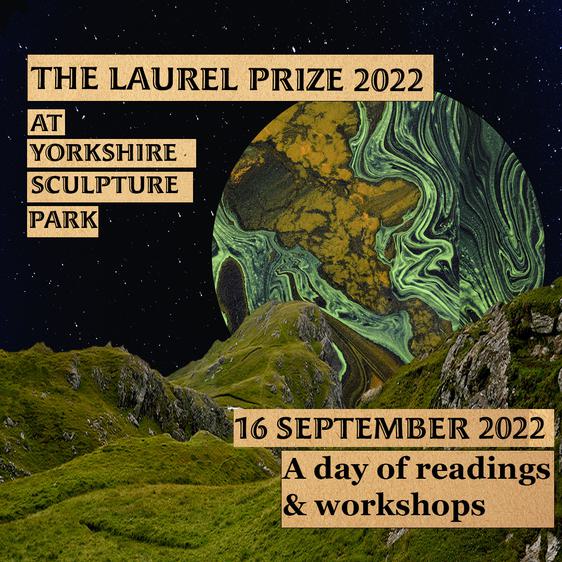
Laurel Prize 2022
25 August 2022 - Event
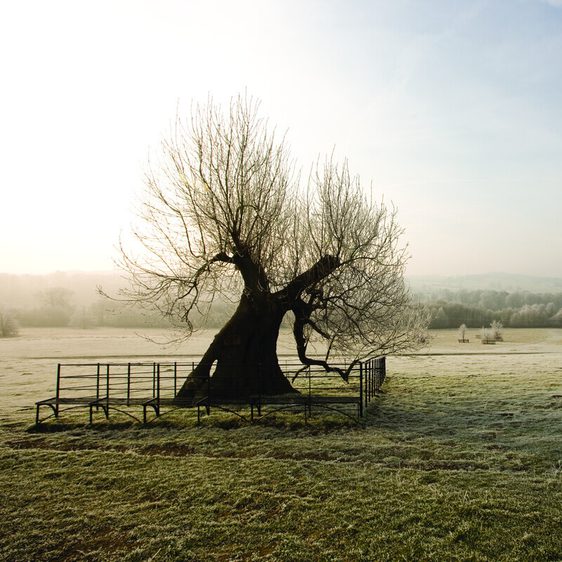
Ancient and Veteran Tree Walk with Tony Wade
Join artist Tony Wade for a gentle walk through YSP’s landscape, exploring its remarkable ancient and veteran trees.